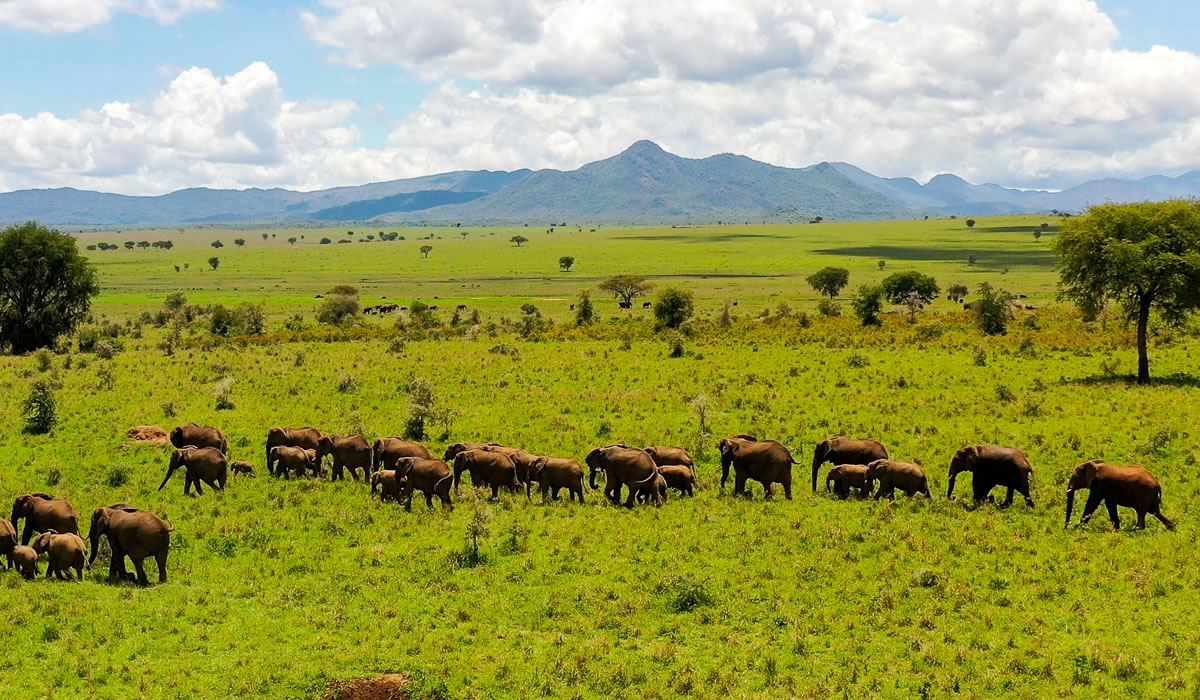Located in the remote northeastern corner of Uganda, nestled between the borders of South Sudan and Kenya, lies Kidepo Valley National Park a pristine expanse of rugged savannah, dramatic mountain landscapes, and some of Africa’s most untamed wildlife. Often dubbed as Uganda’s most isolated national park, Kidepo Valley offers a truly unique safari experience that is far removed from the more frequented parks of East Africa. This seclusion has preserved its raw beauty and ensured that it remains one of the most authentic wilderness destinations on the continent.

Historical and Cultural Background
Kidepo Valley National Park was gazetted in 1962, the same year Uganda attained independence. Before it became a national park, the area was inhabited by the Ik and Karamojong people, pastoralist and hunter-gatherer communities with rich cultural traditions. The Ik, who now live mainly in the mountains north of the park, were displaced during the park’s establishment, a history that still echoes in the cultural dynamics of the region today.
The Karamojong, close relatives of Kenya’s Maasai, still inhabit the region around the park and maintain a traditional lifestyle centered on cattle herding. Their vibrant cultural practices ranging from dance and dress to social structures add a deeply human dimension to the Kidepo experience. Visitors can engage with these communities to gain insight into life in one of Uganda’s most rugged terrains.
Geography and Climate
Covering an area of 1,442 square kilometers, Kidepo Valley National Park lies within the Karamoja region and spans two distinct valleys: the Kidepo Valley and the Narus Valley. The park is surrounded by mountain ranges, including the Morungole Mountains to the north, which rise to about 2,750 meters and serve as a natural boundary with South Sudan.
Kidepo’s topography is diverse and breathtaking. Rolling savannah plains give way to dry riverbeds, acacia woodlands, and rocky outcrops. The Narus Valley, situated in the southern part of the park, is the more fertile of the two and serves as the park’s main wildlife viewing area due to its more permanent water sources. The northern Kidepo Valley, by contrast, is drier and characterized by seasonal rivers, doum palms, and wide, open spaces that stretch to the horizon.
The park experiences a semi-arid climate, with one rainy season between April and October. Temperatures can vary widely, ranging from 21°C to 35°C during the day, and dropping considerably at night. The dry season, from November to March, is considered the best time for wildlife viewing, though the landscape becomes particularly parched and stark during this time.
Flora and Fauna
One of the standout features of Kidepo Valley National Park is its biodiversity, which is uniquely adapted to the arid environment. The park boasts over 77 species of mammals, many of which are not found in other Ugandan parks. Among its more notable residents are lions, leopards, cheetahs, elephants, giraffes, and zebras. The park is also home to the African buffalo, eland, oryx, and the lesser kudu a species more commonly seen in the Horn of Africa than in Uganda.
Birdlife in Kidepo is particularly rich, with over 475 species recorded. Bird watchers can expect to see the ostrich found only in Kidepo in all of Uganda along with the Karamoja apalis, secretary bird, kori bustard, and various species of vultures, eagles, and hornbills. The diversity of both resident and migratory birds makes Kidepo a prime destination for ornithologists and casual birders alike.
The contrasting ecosystems within the park from open grasslands to dense bush support this varied wildlife. The Narus Valley remains the focal point for game drives, particularly in the dry season when animals congregate around its water sources. Visitors often encounter large herds of buffalo, giraffes grazing among acacia trees, and lions resting atop the rocks in the heat of the day.
Tourism and Accessibility
Despite its incredible offerings, Kidepo Valley National Park remains one of Uganda’s least visited parks—a reality owed largely to its remote location. Situated about 700 kilometers from Kampala, the journey to Kidepo by road can take upwards of 12 hours, with sections of the road network being poorly maintained, especially during the rainy season. However, for those willing to make the journey, the reward is an unspoiled wilderness that feels entirely detached from modern civilization.
For travelers seeking a quicker route, charter flights from Entebbe or Kampala to Kidepo’s airstrip offer a more convenient option, albeit at a higher cost. These flights provide an aerial view of the dramatic landscapes and can significantly cut down travel time.
Accommodation within the park ranges from basic campsites to mid-range lodges and a few high-end safari lodges that provide excellent service and panoramic views of the plains. Apoka Safari Lodge, the most luxurious option, offers private cottages, a swimming pool overlooking the savannah, and guided game drives that explore even the most remote corners of the park.
Unique Experiences in Kidepo
What sets Kidepo apart from other national parks is not only its wildlife but also the sense of solitude and immersion it offers. Unlike the more commercialized parks in Kenya and Tanzania, where vehicle traffic can detract from the safari experience, Kidepo offers uninterrupted game viewing and the possibility of spending hours in the park without encountering another visitor.
Game drives in the Narus Valley are the most productive in terms of wildlife sightings, while excursions to the Kidepo Valley reveal a more rugged and sparsely vegetated landscape. The dry riverbeds of the Kidepo River, often lined with doum palms, provide unique photo opportunities and are habitats for species less common in the Narus area.
Walking safaris and guided hikes are also available, including treks up Mount Morungole to visit the Ik people. These hikes are challenging but rewarding, offering stunning views and a chance to interact with one of Uganda’s most isolated ethnic groups. The Ik live in relative seclusion, maintaining ancient customs and a language that is not closely related to other local dialects. Visiting them requires careful cultural sensitivity but can be a deeply enriching experience.
Another unique aspect of Kidepo is night game drives, which allow visitors to observe nocturnal animals such as hyenas, jackals, and leopards. The clarity of the night sky, unmarred by light pollution, also makes for exceptional stargazing.
Conservation and Challenges
Kidepo Valley National Park is managed by the Uganda Wildlife Authority (UWA), which has made commendable efforts in recent years to improve infrastructure and anti-poaching measures. However, challenges remain. Human-wildlife conflict continues to be an issue, particularly in areas where communities live close to the park boundaries. Poaching, although reduced, still poses a threat to certain species, especially in periods of economic hardship.
Climate change also presents a growing challenge, with increasingly erratic rainfall patterns affecting the availability of water and pasture. Conservationists are closely monitoring the park’s ecological balance, as any significant disruptions could have cascading effects on the delicate savannah ecosystem.
On the positive side, community-based tourism initiatives are gaining traction. Local guides and community-run lodges are being promoted as ways to ensure that tourism benefits the surrounding communities. The UWA has also worked to include local voices in park management, a strategy that is essential for long-term conservation success.
Kidepo Valley National Park stands as one of Africa’s last great wilderness areas, a place where the rhythms of nature remain largely undisturbed and where the cultural heritage of indigenous communities still thrives. Its remoteness, once a barrier to tourism, is now one of its greatest assets, offering intrepid travelers a chance to experience a safari that feels genuinely off the beaten path.
For those willing to make the journey, Kidepo offers unforgettable encounters with wildlife, awe-inspiring landscapes, and cultural experiences that are increasingly rare in a rapidly globalizing world. As Uganda continues to develop its tourism infrastructure, Kidepo Valley National Park is poised to become a beacon for sustainable, low-impact tourism that celebrates both nature and culture. In the heart of Africa’s Great Rift Valley, Kidepo remains a hidden gem wild, wide, and wonderfully alive.

